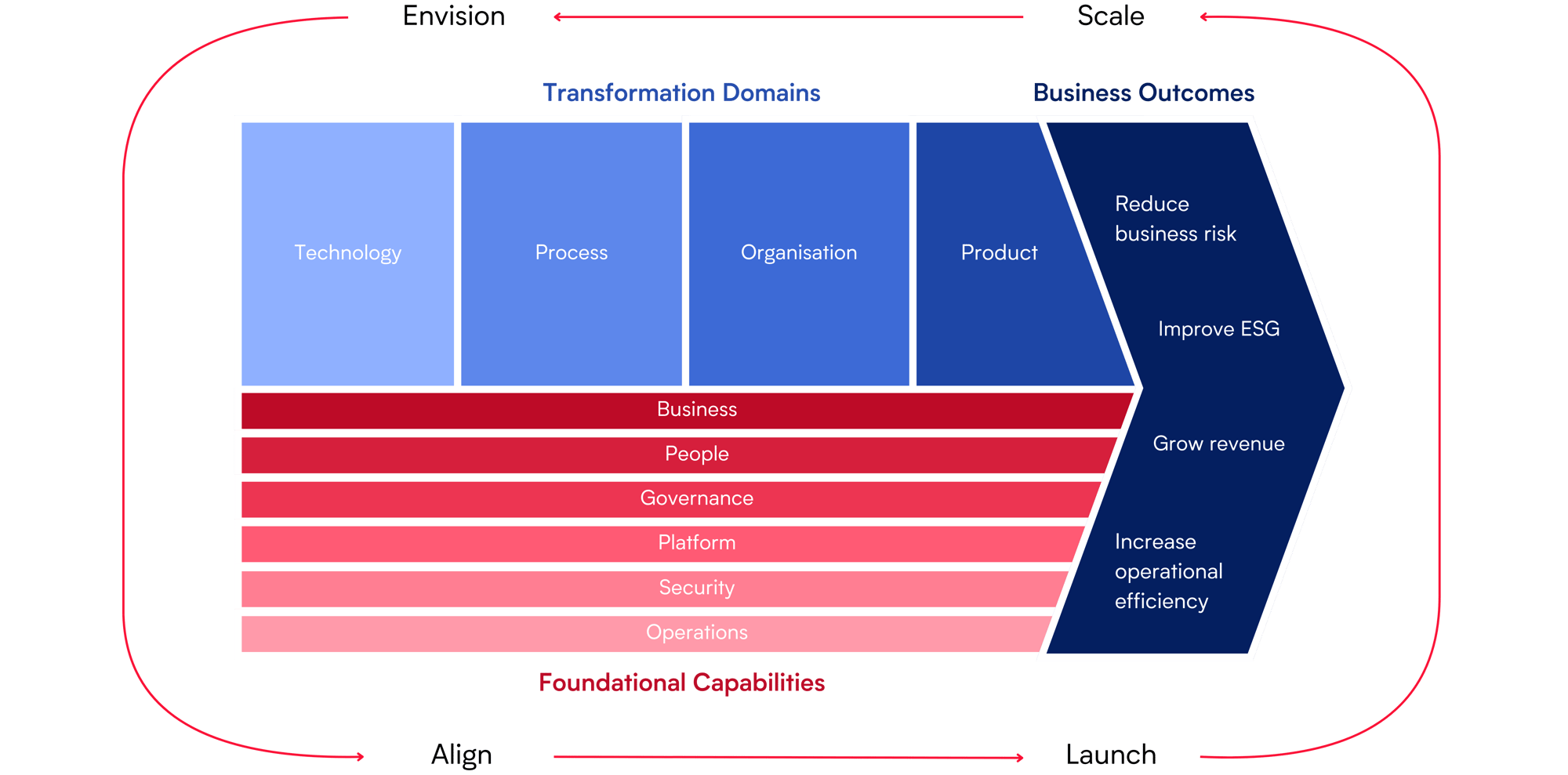CLOUD
Cloud Readiness Assessment
Objectively analysing the benefits, costs, savings, and best approach.
Considering moving to the cloud but not sure how and what the business case would be?
StableLogic's Cloud Computing Readiness Assessment is an objective review of the cloud options, costs, savings and the best approach.
We provide a comprehensive analysis of your current IT infrastructure, applications, and processes to determine the suitability and potential benefits of transitioning to cloud-based solutions. During our cloud computing readiness assessment, our expert team identifies any gaps or challenges that may impact the migration and offers strategic recommendations to ensure a smooth and successful cloud journey. By leveraging our extensive experience and industry best practices, StableLogic ensures your organisation is well-equipped to harness the full potential of cloud technologies.
FEATURED INSIGHT
Optimising Cloud Services Across Different Teams
Cloud adoption has surged across industries, transforming business operations and data management. This trend is driven by cloud computing's scalability, flexibility, and cost-effectiveness. From startups to large enterprises, companies migrate to the cloud to leverage its...

Client Results
Hover over each case study to discover how we are helping clients transform their businesses through a leading-edge cloud computing readiness assessment.
![]()
CONSTRUCTION
Mitigating risks at the forefront of digital transformation with CSCS
The Construction Skills Certification Scheme (CSCS) validate the training and qualifications of over £1m construction workers.
StableLogic commenced this complex digital transformation project with a Cloud Readiness Assessment. This approach ensured a trouble-free migration without any unexpected cloud issues.
![]()
TECHNOLOGY
Laying strong foundations for industry-leading customer care with Computacenter
As part of a larger customer service project, StableLogic completed a Cloud Readiness Assessment for Computacenter.
The resulting positive business case led to a successful cloud migration of customer contact services.
![]()
tv & media
Equipping and enabling operational success with Freeview
Freeview is the UK digital broadcast TV service, providing free-to-air TV services from organisations such as the BBC and ITV.
StableLogic completed a Cloud Readiness Assessment as part of our overall recommendations, resulting in a highly successful project.

Our Cloud Readiness Assessment comprises
two core modules:
1. StableLogic Readiness Assessment
2. AWS Cloud Adoption Framework
"Moving to the cloud is a requirement for clients looking to take advantage of AI and many other cloud based functions. A realistic plan, budget and business case is the critical starting point - and we can deliver that."
Craig Robinson
CEO, StableLogic
The Cloud Adoption Landscape

What will you gain from the assessment?
Cost
optimisation.
Enable accurate budgeting and cost savings by identifying unnecessary resources.
Risk
mitigation.
Ensure security, compliance, and effective disaster recovery plans, minimising risks.
Performance
enhancement.
Determine scalability and improve efficiency by selecting optimal cloud services and configurations.
Strategic
planning.
Provide a detailed migration roadmap and ensure the cloud strategy aligns with business goals.
Connect with the StableLogic Cloud Readiness team.
⸻ FAQs ⸻
The AWS Cloud Adoption Framework (AWS CAF) is a comprehensive guide designed to help organisations successfully transition to the AWS cloud. It provides a structured approach to cloud adoption, focusing on six key perspectives: Business, People, Governance, Platform, Security, and Operations.
Each perspective addresses different aspects of cloud readiness and implementation, ensuring that all critical areas are considered and aligned with the organisation’s goals. By leveraging the AWS Cloud Adoption Framework, organisations can develop a clear and effective cloud strategy, optimise their cloud environments, and achieve sustainable success in their cloud initiatives. At StableLogic, we utilise the AWS CAF to guide our clients through every step of their cloud journey, ensuring a smooth and efficient transition to the cloud from effective cloud computing readiness assessment services.
Our cloud computing readiness assessment service offers a thorough evaluation designed to determine an organisation's preparedness for transitioning to cloud-based solutions. At StableLogic, we conduct a detailed analysis of your current IT infrastructure, applications, and processes to identify the suitability and potential benefits of cloud adoption.
This assessment highlights any gaps or challenges that may impact the migration and provides strategic recommendations to address these issues. By understanding your organisation's specific needs and objectives, we ensure that you are well-equipped to make informed decisions and achieve a seamless and successful move to the cloud.
The cost of cloud computing readiness assessment services varies based on the complexity and scope of your organisation's IT infrastructure and specific requirements. At StableLogic, we offer tailored assessments to meet the unique needs of each client. Our pricing is transparent and determined following a thorough evaluation of your current systems and objectives.
We provide a detailed proposal outlining the scope of work, deliverables, and associated costs, ensuring you understand the investment required. By leveraging our expertise, we deliver cost-effective cloud readiness assessment services that provide valuable insights and strategic recommendations for a smooth transition to the cloud.
%20(1).gif?width=229&height=128&name=March%20Assets%20(500%20x%20280%20px)%20(1).gif)
%20(2).gif?width=227&height=127&name=March%20Assets%20(500%20x%20280%20px)%20(2).gif)



